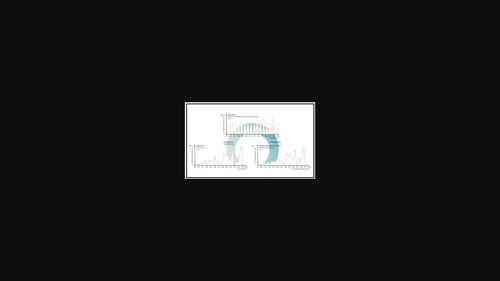当前位置:
X-MOL 学术
›
J. Raman Spectrosc.
›
论文详情
Our official English website, www.x-mol.net, welcomes your feedback! (Note: you will need to create a separate account there.)
Quantifying the impact of sample, instrument, and data processing on biological signatures in modern and fossil tissues detected with Raman spectroscopy
Journal of Raman Spectroscopy ( IF 2.5 ) Pub Date : 2024-03-20 , DOI: 10.1002/jrs.6669 Jasmina Wiemann 1, 2, 3, 4, 5 , Philipp R. Heck 1, 2
Journal of Raman Spectroscopy ( IF 2.5 ) Pub Date : 2024-03-20 , DOI: 10.1002/jrs.6669 Jasmina Wiemann 1, 2, 3, 4, 5 , Philipp R. Heck 1, 2
Affiliation

|
Raman spectroscopy is a popular tool for characterizing complex biological materials and their geological remains. Ordination methods, such as principal component analysis (PCA), use spectral variance to create a compositional space, the ChemoSpace, grouping samples based on spectroscopic manifestations reflecting different biological properties or geological processes. PCA allows to reduce the dimensionality of complex spectroscopic data and facilitates the extraction of informative features into formats suitable for downstream statistical analyses, thus representing a first step in the development of diagnostic biosignatures from complex modern and fossil tissues. For such samples, however, there is presently no systematic and accessible survey of the impact of sample, instrument, and spectral processing on the occupation of the ChemoSpace. Here, the influence of sample count, unwanted signals and different signal‐to‐noise ratios, spectrometer decalibration, baseline subtraction, and spectral normalization on ChemoSpace grouping is investigated and exemplified using synthetic spectra. Increase in sample size improves the dissociation of groups in the ChemoSpace, and our sample yields a representative and mostly stable pattern in occupation with less than 10 samples per group. The impact of systemic interference of different amplitude and frequency, periodical or random features that can be introduced by instrument or sample, on compositional biological signatures is reduced by PCA and allows to extract biological information even when spectra of differing signal‐to‐noise ratios are compared. Routine offsets ( 1 cm−1 ) in spectrometer calibration contribute in our sample to less than 0.1% of the total spectral variance captured in the ChemoSpace and do not obscure biological information. Standard adaptive baselining, together with normalization, increases spectral comparability and facilitates the extraction of informative features. The ChemoSpace approach to biosignatures represents a powerful tool for exploring, denoising, and integrating molecular information from modern and ancient organismal samples.
中文翻译:

量化样品、仪器和数据处理对拉曼光谱检测到的现代组织和化石组织中生物特征的影响
拉曼光谱是表征复杂生物材料及其地质遗迹的流行工具。主成分分析 (PCA) 等排序方法使用光谱方差创建成分空间(ChemoSpace),根据反映不同生物特性或地质过程的光谱表现对样品进行分组。 PCA 可以降低复杂光谱数据的维数,并有助于将信息特征提取为适合下游统计分析的格式,从而代表了从复杂的现代组织和化石组织中开发诊断生物特征的第一步。然而,对于此类样品,目前还没有系统且可访问的调查来调查样品、仪器和光谱处理对 ChemoSpace 占用的影响。在这里,使用合成光谱研究并举例说明了样本计数、不需要的信号和不同的信噪比、光谱仪去校准、基线扣除和光谱归一化对 ChemoSpace 分组的影响。样本量的增加改善了 ChemoSpace 中各组的分离,并且我们的样本产生了具有代表性且大部分稳定的占用模式,每组样本少于 10 个。 PCA 减少了不同幅度和频率的系统干扰、仪器或样品引入的周期性或随机特征对成分生物特征的影响,并且即使在不同信噪比的光谱被分析时也可以提取生物信息。比较的。常规偏移(1 厘米−1 )在光谱仪校准中对我们样品的贡献小于 ChemoSpace 中捕获的总光谱方差的 0.1%,并且不会掩盖生物信息。标准自适应基线与归一化一起提高了光谱的可比性并有利于信息特征的提取。 ChemoSpace 生物特征方法是探索、去噪和整合现代和古代生物样本分子信息的强大工具。
更新日期:2024-03-20
中文翻译:

量化样品、仪器和数据处理对拉曼光谱检测到的现代组织和化石组织中生物特征的影响
拉曼光谱是表征复杂生物材料及其地质遗迹的流行工具。主成分分析 (PCA) 等排序方法使用光谱方差创建成分空间(ChemoSpace),根据反映不同生物特性或地质过程的光谱表现对样品进行分组。 PCA 可以降低复杂光谱数据的维数,并有助于将信息特征提取为适合下游统计分析的格式,从而代表了从复杂的现代组织和化石组织中开发诊断生物特征的第一步。然而,对于此类样品,目前还没有系统且可访问的调查来调查样品、仪器和光谱处理对 ChemoSpace 占用的影响。在这里,使用合成光谱研究并举例说明了样本计数、不需要的信号和不同的信噪比、光谱仪去校准、基线扣除和光谱归一化对 ChemoSpace 分组的影响。样本量的增加改善了 ChemoSpace 中各组的分离,并且我们的样本产生了具有代表性且大部分稳定的占用模式,每组样本少于 10 个。 PCA 减少了不同幅度和频率的系统干扰、仪器或样品引入的周期性或随机特征对成分生物特征的影响,并且即使在不同信噪比的光谱被分析时也可以提取生物信息。比较的。常规偏移(1 厘米



























 京公网安备 11010802027423号
京公网安备 11010802027423号